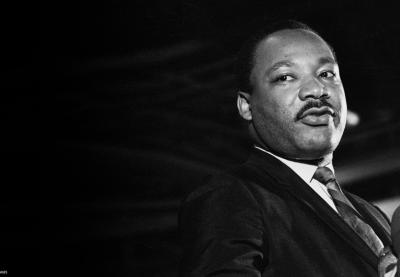Editor’s note: Several very useful readings from the student text library are included in this article. You can also find more suggestions for a meaningful MLK Day here.
As Dr. Martin Luther King Jr. Day approaches, many of you may be making plans to teach about him and his legacy. It’s important to seize the opportunity this holiday affords to teach about his activism and students’ own capacity to be change agents. Too often, however, lesson plans fail to move beyond “I Have a Dream,” to examine King’s status as a “hero” or to acknowledge the depth and complexity of the movement he helped to lead.
Instead of doing the “same old, same old,” consider a wider range of approaches to teaching about King that will deepen your students’ understanding of his legacy and his role in a broad, dynamic movement that involved many people, organizations, strategies and events. The four domains of Learning for Justice’s Social Justice Standards—Identity, Diversity, Justice and Action—can guide you.
Identity and Diversity
For elementary students, the identity and diversity lenses are good initial approaches to King’s work, which called for everyone to love one another, regardless of skin color. Lessons in which students create their own beautiful self-portraits and examine racial identities in children’s books or through writing poetry encourage students to be proud of their identities and appearance while still validating and respecting others’. For even younger learners, try a lesson focusing on different types of hair and watch as students delight in their differences while celebrating their individuality.
Justice and Action
King’s masterful “Letter From a Birmingham Jail” presents an opportunity to go beyond the most familiar King quotes and to do more critical analysis. For example, help students draw connections between his stance on nonviolent resistance and the number of times he was arrested and jailed. It’s also a great chance to compare King’s concept of justice with that of the clergy he addresses in the letter, including those he identifies as “white moderates.” Another consideration is to tie the systemic function of his jail time as a movement leader to that of Nelson Mandela, who was jailed for 27 years for leading a civil rights movement in South Africa.
When it comes to King’s philosophy of nonviolence, mention to students that he was inspired by Mahatma Gandhi to lead through peaceful resistance. Then read educator and activist Septima Clark’s experiences as a witness to King’s nonviolence in the face of physical violence, threats and anger. You might then have students create a timeline of specific events—including triumphs and obstacles—on the path toward equal civil rights in the United States. Students can interact with multiple readings, photographs and more to create a dynamic timeline online or on paper that will help them see the scope of the civil rights movement, of which King was one of many participants.
The movement was multifaceted. One aspect, for instance, concerned workers’ rights to fair wages and humane working conditions. King’s last speech, the night before he was killed, was about sanitation workers’ rights, and he was one of many people fighting for workers during the civil rights era. (Listen to “Dr. King’s Final Speech,” a StoryCorps interview in which a couple recall hearing this speech in person.) César Chávez was fighting the battle to form unions for California’s migrant workers during the same time. Explore a telegram from King to Chávez, and have students discuss similarities and differences between the two leaders and their work.
Additional Approaches
Interact with Dr. King! Show your students video clips and audio recordings of him. Let them experience the dynamic leader and orator he was instead of a one-dimensional worksheet. Try beautifully illustrated books like the ones recommended by Black Children’s Books and Authors. If you can find books that come with an audio CD featuring King, students can listen along to his words.
King’s words are powerful and full of symbolism and imagery—another way into his messages. Teach a lesson on figurative language and do a close reading of one of his speeches. Parse out pieces of the text to your students and have them analyze the meanings, look up places he may reference, and encourage them to come to their own conclusions about his language choices.
King’s life and legacy are dynamic and complex. As you prepare to honor him this month, next month and beyond, take the time to place his life and legacy in the context of the civil rights movement at large. Doing so will allow your students to see King and the movement beyond the most famous words and images. It will also set the stage for more robust teaching about the civil rights movement, which relied on thousands of foot soldiers too often obscured by a narrative that focuses exclusively on King.
For more ideas about how to teach the civil rights movement, explore our Teaching the Movement resources.
Mascareñaz is the former director of Equity Affairs for Wake County Public Schools and a former teaching and learning specialist for Learning for Justice, then known as Teaching Tolerance.
